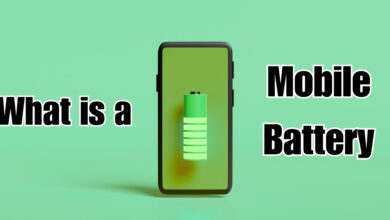What is a Gyroscope Sensor? (Types and More)

Gyro sensors, also known as angular rate sensors or angular velocity sensors, are devices that sense angular velocity.
Angular velocity is the change in rotational angle per unit of time and is generally expressed in deg/s (degrees per second).
Gyro sensors come in a variety of types and have various applications, including camera-shake detection systems, motion sensing for video games, and vehicle electronic stability control systems.
Vibration gyro sensors sense angular velocity from the Coriolis force applied to a vibrating element and have different materials and structures.
There are three main applications for gyro sensors: angular velocity sensing, angle sensing, and control mechanisms.
Gyro sensors are widely used in products such as smartphones, camera-shake correction systems, and car navigation systems.
Types of Gyroscope Sensors
Gyroscopes are essential sensors used in various applications to detect and measure angular velocity. There are several types of gyroscope sensors, each with its unique design and functionality.
Knowing the different types of gyroscopes can help in choosing the most suitable sensor for specific applications.
1. Ring Laser Gyroscope
The ring laser gyroscope is a highly accurate and sensitive gyroscope commonly used in navigation systems.
It operates by utilizing the Sagnac effect, which causes a phase shift in laser beams traveling in opposite directions within a closed loop. By measuring the phase difference, the gyroscope can determine the angular velocity.
2. Fiber-Optic Gyroscope
The fiber-optic gyroscope utilizes the interference of light waves in a coiled optical fiber to measure rotation.
It is known for its high accuracy, stability, and immunity to external vibrations. Fiber-optic gyroscopes are commonly used in aerospace applications, autonomous vehicles, and navigation systems.
3. Fluid Gyroscope
The fluid gyroscope uses the movement of fluid, such as gas or liquid, to detect orientation changes.
It operates on the principle of conservation of angular momentum, where any change in the orientation of the gyroscope causes the fluid to move.
Fluid gyroscopes are often used in aerospace applications and stabilizing platforms.
4. Vibration Gyroscope
Vibration gyroscopes, also known as vibrating structure gyroscopes, rely on the Coriolis force to measure angular velocity.
These gyroscopes consist of a vibrating element that experiences a deflection due to the Coriolis force when subjected to rotation.
Vibration gyroscopes are often found in consumer electronics, such as smartphones and gaming devices, for motion sensing and image stabilization.
Each type of gyroscope sensor has its advantages and applications. The choice of gyroscope sensor depends on factors such as required accuracy, sensitivity, size constraints, and environmental conditions.
By knowing the different types of gyroscopes, engineers and designers can make informed decisions when selecting the most appropriate sensor for their specific application needs.
Applications of Gyroscope Sensors
Gyroscope sensors have revolutionized the functionality of various devices in today’s technologically advanced world.
Their applications range from enhancing smartphone features to improving the accuracy of car navigation systems and cameras.
In the realm of mobile phones, gyroscope sensors play a vital role in detecting motion and gestures. They enable features like automatic screen rotation and motion-based gaming, providing a more immersive user experience.
Additionally, in mobile apps, gyroscope sensors are utilized to power high-tech augmented reality (AR) games, creating interactive and engaging virtual environments.
Car navigation systems heavily rely on gyroscope sensors to display accurate navigation information and assist in electronic stability control.
By precisely detecting orientation changes, these sensors ensure drivers can navigate safely and efficiently. Moreover, gyroscope sensors are also integrated into cameras to combat camera shake and enable image stabilization.
This feature allows photographers and videographers to capture sharp and steady shots even in challenging conditions.
These are just a few examples of the wide range of applications that gyroscope sensors have found in the modern world.
As technology continues to advance, we can expect these sensors to further enhance the functionality of various devices, driving innovation and improving user experiences across industries.




